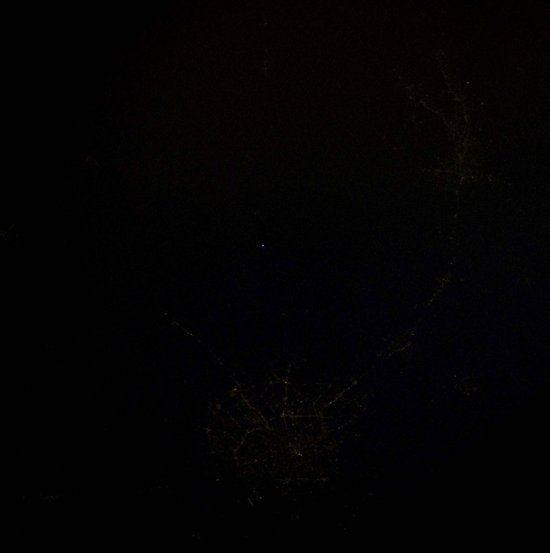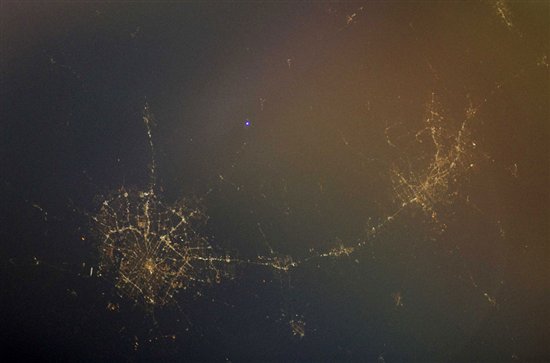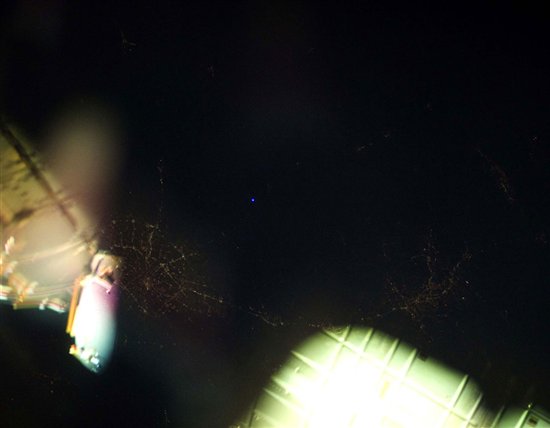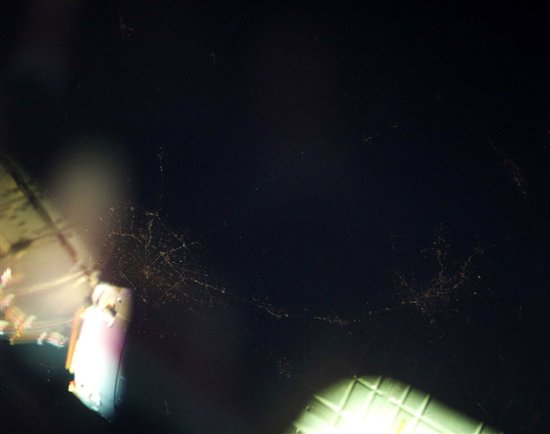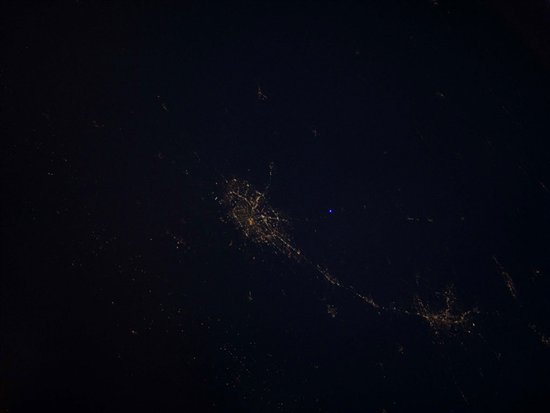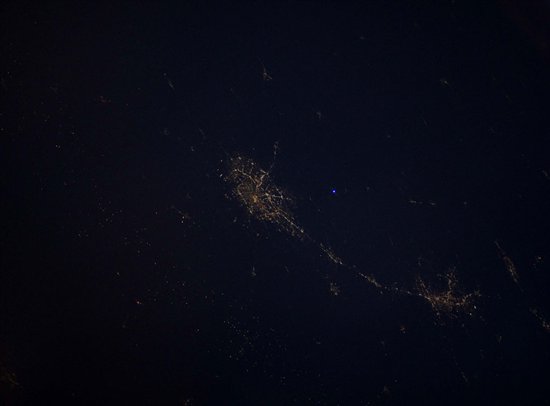For years, Robert Reeves of San Antonio, Texas, has been an Astronomy contributor, friend, and amazing astroimager. Now Reeves, along with some friends in the San Antonio Astronomical Association and the Austin Astronomical Society, has produced a major imaging first — producing a flash of bright light from a particular spot on Earth that was imaged from the International Space Station (ISS).
With their friend, astronaut Don Pettit aboard the station, Reeves and company flashed the space station with a 1-watt laser and a 1.6 billion-lumen spotlight at 7:30 CST March 3, 2012 (1h30m UT March 4). Aboard the ISS, Pettit could see the flashes, took pictures of them, and sent the images along. The exercise represents the first direct visual contact by an orbiting astronaut looking for a specific blinking light on Earth!
“The late night/early morning ISS flashing was a smashing success,” Pettit wrote to the group on Earth. “We could see your flashing with no trouble. We noticed the 1 Hz blink, but it did not seem to completely extinguish between flashes (see pictures). It definitely alternated between white and blue. The white was much brighter than the blue laser. We could only see the laser when the white light was off and not all the time. This has to be a first, and we have the pictures to prove it.”
What an incredible dance of light as seen from some 250 miles (400 kilometers) above the planet!
(You may need to look closely at the first photo to see the pinpoint of light in the center.)
